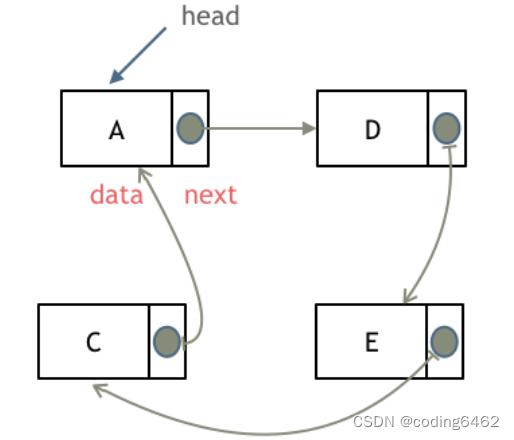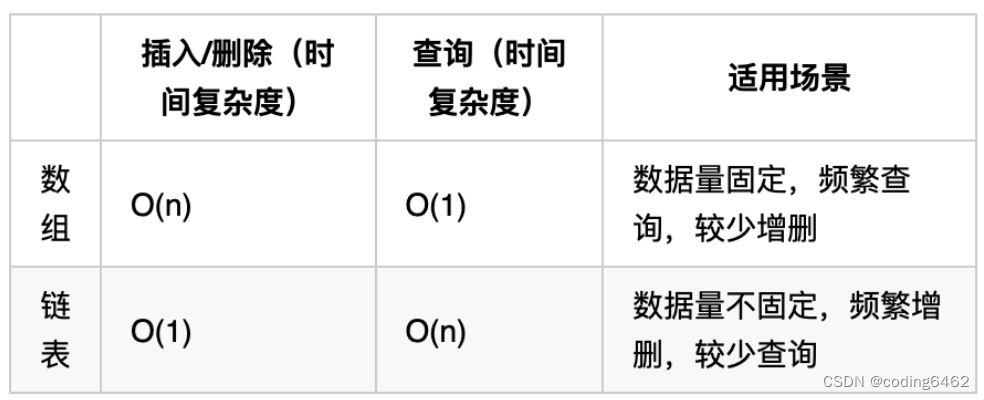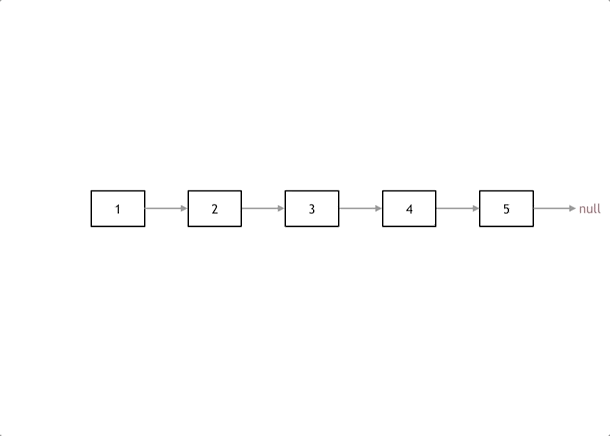今日内容:链表理论基础,203.移除链表元素,707.设计链表,206.反转链表
文章链接: 代码随想录
题目链接:203. 移除链表元素 ,707. 设计链表 ,206.反转链表
1.链表理论基础
单链表:
双链表: 循环链表:
循环链表:
链表的题目以单链表居多,其特性和数组等类型的区别在于节点的指向性。每个节点包含一个val,同时也指向下一个节点,这意味着和数组依靠索引去引用不同,对于某个节点的信息获取往往需要上一个节点来指向。这就涉及到许多常见的链表操作,比如删除和添加可以通过改变指向来实现,再比如对于头结点的处理往往可以建立虚拟头结点来实现。同时其长度也可以随着操作而不断改变,这和数组有很大的区别。
链表与数组:
定义:
// 单链表定义
struct ListNode {
int val; // 节点上存储的元素
ListNode *next; // 指向下一个节点的指针
ListNode(int x) : val(x), next(NULL) {} // 节点的构造函数
};
2.203移除链表元素
题目简单,利用链表的性质,要移除一个元素只需要将其跳过即可。注意的点在于,由于可能需要删除头结点,所以需要建立虚拟头结点来完成连接。同时循环条件也需要注意,避免报错。
class Solution {
public:
ListNode* removeElements(ListNode* head, int val) {
ListNode* x = new ListNode(0);
x->next = head;
ListNode* y = x;
while (y->next) {
if(y->next->val == val) {
y->next = y->next->next;
} else {
y = y->next;
}
}
return x->next;
}
};
python版:
class Solution:
def removeElements(self, head: Optional[ListNode], val: int) -> Optional[ListNode]:
x = ListNode(0, head)
y = x
while y.next:
if y.next.val == val:
y.next = y.next.next
else:
y = y.next
return x.next
3.707 设计链表
这道题相对比较综合,涉及了链表的定义已经常见操作。因为我是C++和python都练习,所以感触比较大的是二者对于链表的操作还是有较大差距的。C++创建新节点的时候涉及new动态分配,而python可以直接创建。同时这道题也再一次说明了虚拟头结点的好处。完成这道题也对理解单链表有很大帮助。
class MyLinkedList {
public:
struct ListNode {
int val;
ListNode* next;
ListNode(int val) : val(val), next(NULL) {}
};
MyLinkedList() {
size = 0;
dummy = new ListNode(0);
}
int get(int index) {
if (index < 0 || index >= size)
return -1;
ListNode* cur = dummy->next;
for (int i = 0; i < index; i++)
cur = cur->next;
return cur->val;
}
void addAtHead(int val) {
ListNode* newhead = new ListNode(val);
newhead->next = dummy->next;
dummy->next = newhead;
size++;
}
void addAtTail(int val) {
ListNode* cur = dummy;
while (cur->next != NULL)
cur = cur->next;
ListNode* addNode = new ListNode(val);
cur->next = addNode;
size++;
}
void addAtIndex(int index, int val) {
if (index < 0 || index > size)
return;
ListNode* cur = dummy;
ListNode* addNode = new ListNode(val);
for (int i = 0; i < index; i++)
cur = cur->next;
addNode->next = cur->next;
cur->next = addNode;
size++;
}
void deleteAtIndex(int index) {
if (index < 0 || index >= size)
return;
ListNode* cur = dummy;
for (int i = 0; i < index; i++)
cur = cur->next;
if (cur->next != NULL) {
ListNode* temp = cur->next;
cur->next = cur->next->next;
delete temp;
size--;
}
}
private:
ListNode* dummy;
int size;
};
python版:
class ListNode:
def __init__(self, val=0, next=None):
self.val = val
self.next = next
class MyLinkedList:
def __init__(self):
self.size = 0
self.dummy = ListNode(0)
def get(self, index: int) -> int:
if index < 0 or index >= self.size:
return -1
cur = self.dummy.next
for i in range(index):
cur = cur.next
return cur.val
def addAtHead(self, val: int) -> None:
self.dummy.next = ListNode(val,self.dummy.next)
self.size += 1
def addAtTail(self, val: int) -> None:
cur = self.dummy
while cur.next:
cur = cur.next
cur.next = ListNode(val)
self.size += 1
def addAtIndex(self, index: int, val: int) -> None:
if index < 0 or index > self.size:
return -1
cur = self.dummy
for i in range(index):
cur = cur.next
cur.next = ListNode(val,cur.next)
self.size += 1
def deleteAtIndex(self, index: int) -> None:
if index < 0 or index >= self.size:
return -1
cur = self.dummy
for i in range(index):
cur = cur.next
cur.next = cur.next.next
self.size -= 1
# Your MyLinkedList object will be instantiated and called as such:
# obj = MyLinkedList()
# param_1 = obj.get(index)
# obj.addAtHead(val)
# obj.addAtTail(val)
# obj.addAtIndex(index,val)
# obj.deleteAtIndex(index)
4.206反转链表
这道题可以说是非常经典,算是链表必考题。所谓反转就是要改变指向,而不是新建链表。要将头变成尾,尾变成头。因此对于相邻节点,逆转指向即可,同时通过中间量保存下一个节点来实现循环,直到最后一个节点。
动态示意图:
/**
* Definition for singly-linked list.
* struct ListNode {
* int val;
* ListNode *next;
* ListNode() : val(0), next(nullptr) {}
* ListNode(int x) : val(x), next(nullptr) {}
* ListNode(int x, ListNode *next) : val(x), next(next) {}
* };
*/
class Solution {
public:
ListNode* reverseList(ListNode* head) {
ListNode* pre = NULL;
ListNode* cur = head;
while(cur){
ListNode* temp = cur->next;
cur->next = pre;
pre = cur;
cur = temp;
}
return pre;
}
};
python版:文章来源:https://uudwc.com/A/DyMyk
# Definition for singly-linked list.
# class ListNode:
# def __init__(self, val=0, next=None):
# self.val = val
# self.next = next
class Solution:
def reverseList(self, head: Optional[ListNode]) -> Optional[ListNode]:
pre = None
cur = head
while cur:
temp = cur.next
cur.next = pre
pre = cur
cur = temp
return pre
总之链表的题目都是建立在对数据结构的理解上的,应该跳出对数组的理解,抓住特性去思考题目。文章来源地址https://uudwc.com/A/DyMyk

